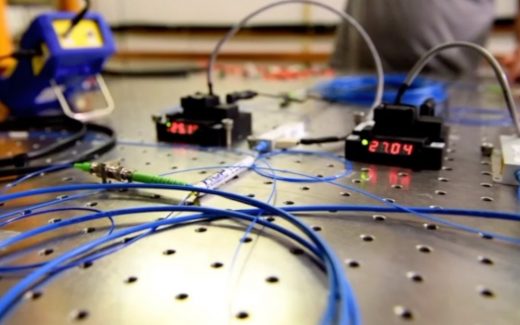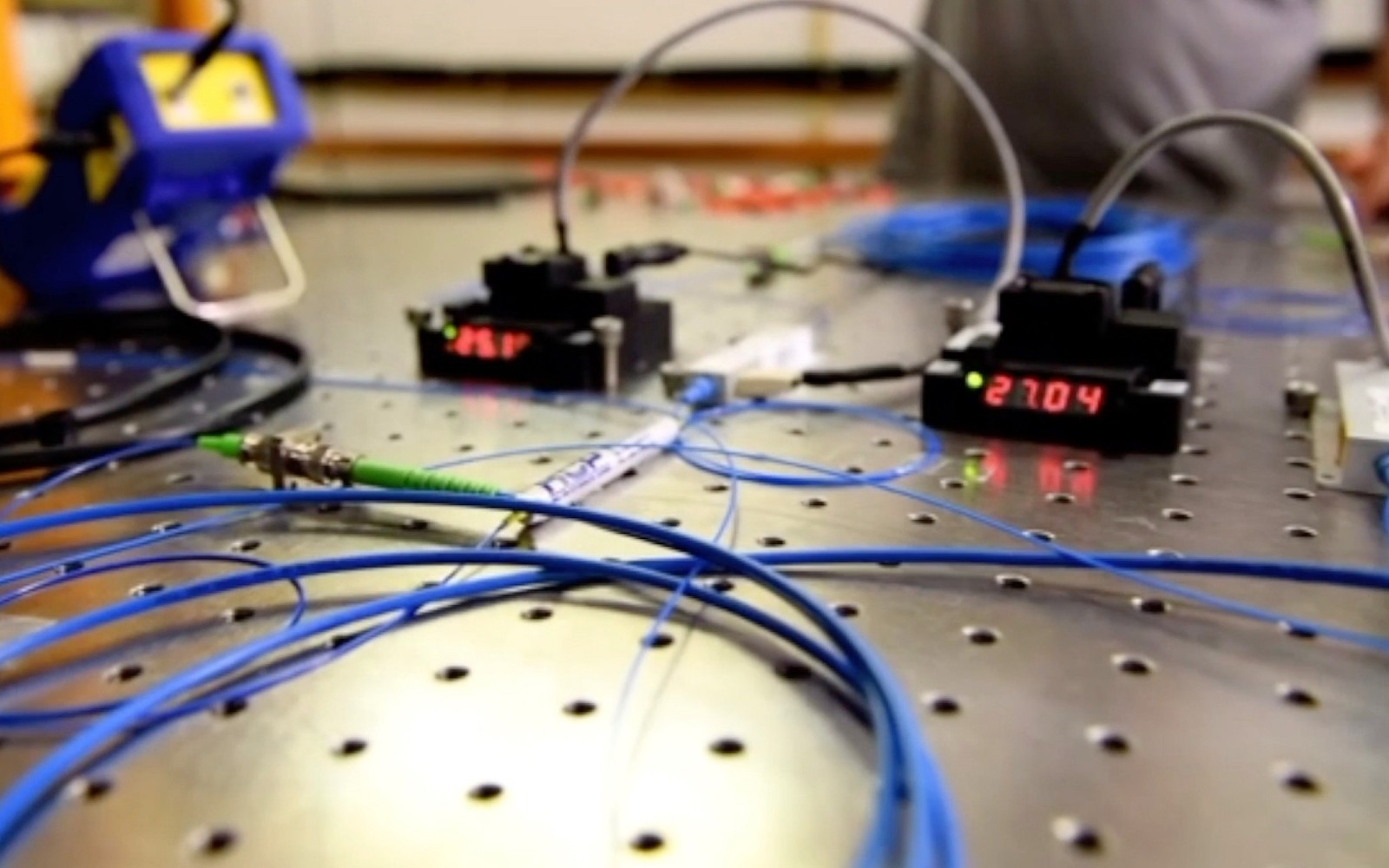A successful experiment gets us one step closer to a quantum internet
The quantum internet is one step closer to becoming reality. This week, a joint team of researchers made up of scientists from Caltech, the Department of Energy’s Fermilab, AT&T, Harvard University, NASA’s Jet Propulsion Lab and the University of Calgary announced that they successfully teleported qubits of photons across approximately 27 miles of fiber-optic cable.
While other scientists have worked on similar projects, this group is the first to beam quantum information across such a great distance. What’s more, they did so across two separate networks and with a fidelity greater than 90 percent. One of the researchers on the team told Motherboard they built the networks using “off-the-shelf” components, and that their tech is compatible with existing telecommunications equipment.
In PRX Quantum, where the team published its findings, they say their work provides “a realistic foundation for a high-fidelity quantum Internet with practical devices.” They added, “this is a key achievement on the way to building a technology that will redefine how we conduct global communication.” Experts believe a quantum internet could revolutionize a variety of computing fields, including cryptography and search.
The process of teleporting qubits across a great distance doesn’t actually involve transferring matter. Instead, it takes advantage of a phenomenon called entanglement where the properties of a pair of particles are linked in such a way that they remain connected regardless of the distance between them.
With two 13-mile networks under their belts, the Caltech and Fermilab teams plan to build a city-scale network called the Illinois Express Quantum Network in Chicago next. But don’t expect you’ll be able to replace your Comcast or AT&T internet just yet — and, no, we won’t be using this technology to teleport people anytime soon either. “People on social media are asking if they should sign up for a quantum internet provider (jokingly of course),” Maria Spiropulu, one of the particle physicists who co-authored the paper, told Motherboard. “We need (a lot) more R&D work.”
(27)




